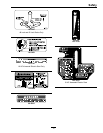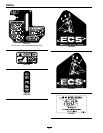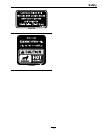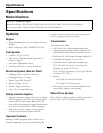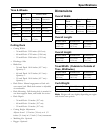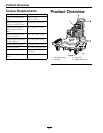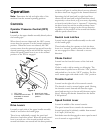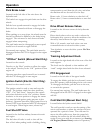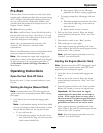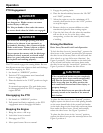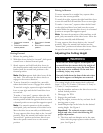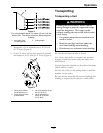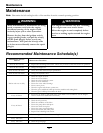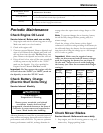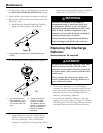
Operation
Pre-Start
Fill fuel tanks. For best results use only clean, fresh
regular grade unleaded gasoline with an octane rating
of 87 or higher. Regular grade leaded gasoline may
also be used; however, combustion chamber and
cylinder head will require more frequent service. See
Engine Owner’s Manual.
Do Not add oil to gasoline.
Do Not overll fuel tank. Never ll the fuel tank so
that the fuel level rises above a level that is 1/2 inch
below the bottom of the ller neck to allow for fuel
expansion and prevent fuel spillage.
Make sure you understand the controls, their
locations, their functions, and their safety
requirements.
Refer to the Maintenance section and perform all the
necessary inspection and maintenance steps.
Note: After starting the engine and engaging the
hydro drive, if either of the drive wheels acts sluggish
or will not rotate at all, stop engine and refer to
the Hydraulic System Air Purge Procedure in
Maintenance.
Operating Instructions
Open the Fuel Shut-Off Valve
Rotate the valve 1/4 turn counterclockwise to turn
fuel on.
Starting the Engine (Manual Start)
Note: Operator must have PTO disengaged and
speed control lever in neutral position when starting
the engine.
1. Lock drive levers in neutral and engage park
brake.
Note: A cold weather starting kit has been added
for ease of starting in either cold weather or when
the unit has not been run for a period of time.
• To use cold start kit:
A. Pull split ring straight out the side of the
unit, and hook the ring over the lower rear
hydro control shield bolt.
B. Start engine. Refer to the following
guidelines for further starting suggestions.
• To engage pump drive (disengage cold start
kit):
A. Pull chain straight out from the side of the
unit until the split ring can be removed
from the bolt.
B. Slowly release tension on chain.
2. Pull out the choke control. Place the throttle
control midway between the “Slow” and “Fast”
positions.
3. Turn the key switch to the “Run” position.
4. Pull recoil rope to start engine.
5. After engine warms up, gradually push in the
choke control. Do Not run warm engine with the
choke in the “ON” position.
Note: Kawasaki engines generally need to be
“choked” even when warm.
Starting the Engine (Electric Start)
Note: Operator must have PTO disengaged, speed
control lever in neutral position, and OPC levers
depressed when starting the engine.
1. Lock drive levers in neutral and engage park
brake.
2. Pull out the choke control. Place the throttle
control midway between the “Slow” and “Fast”
positions.
3. Turn the ignition switch to the “Start” position.
Release the switch as soon as the engine starts.
Important: Do Not crank the engine
continuously for more than ten seconds at
a time. If the engine does not start, allow a
60 second starter cool-down period between
starting attempts. Failure to follow these
guidelines can burn out the starter motor.
4. After engine warms up, gradually push in the
choke control. Do Not run warm engine with the
choke in the “ON” position.
Note: Kawasaki engines generally need to be
“choked” even when warm.
19



